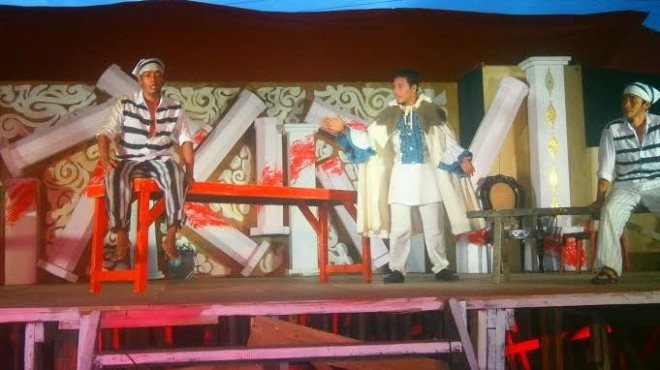
It didn’t look like your usual provincial jail. The buildings, decked out in the pale yellow colors of the province, were clean and well-maintained. The male and female cells were open, and inmates in civilian clothes and detainees in their orange uniforms strolled around.
The iron-bar entrance was, of course, locked. A police force stood guard as visitors checked in and were rubber-stamped.
This was the Ilocos Sur Provincial Jail in Bantay, which adjoins the capital of Vigan, the famous heritage city.
The event was “Misericordia,” a play performed by an all-inmate cast of 25, 20 males and five females. The producers were the Ilocos Provincial Government headed by Governor Ryan Singson and the Society of the Divine Word fathers of the Immaculate Conception School of Theology (ICST) seminary in Vigan.
Playwright and director Angelo Aurelio, an Aliw award nominee, had been working on the project since April, when Fr. Nick Vaquilar, rector of ICST, and Fr. Rodel Molina asked his help in their efforts to aid and rehabilitate the inmates.
The SVD fathers provided the concept, and the provincial government took care of the funds.
Aurelio came up with the play “Misericordia,” which has mercy as its theme. “The rationale for the play is Pope Francis’ declaring 2016 as the ‘Extraordinary Year of Mercy,’” said the playwright.
For several months, Aurelio immersed himself in the project, training the raw talents, developing their potential, and shuttling between the prison house and the house of prayer (the seminary).
Expressionist
The result was a polished production of “Misericordia,” with an abstract production design, masks and the actors caparisoned in costumes from another era. An expressionist morality play, it had movements and lines that were delivered stentorian-komedya-style.
The inmates performed almost like professionals. They were playing themselves; the story was set in a prison (a metaphor for the state) with the prisoners becoming rebellious because of the injustices inflicted on them. The characters included a heroic priest comforting the prisoners, haughty prison guards (played by women), a cruel general (dressed like a Napoleonic officer) and a ruler (Hari) who threatened to kill rebels and lawbreakers “on the spot.”
Any resemblance to the new dispensation could only have been a coincidence.
“Awa” (compassion) was a word often heard in the play. At the end, it took a sacrificial lamb to restore order to chaos, and for God’s mercy to prevail. “The play exemplifies the powerful role of theater as a catalyst for change,” said playwright Frank Rivera.